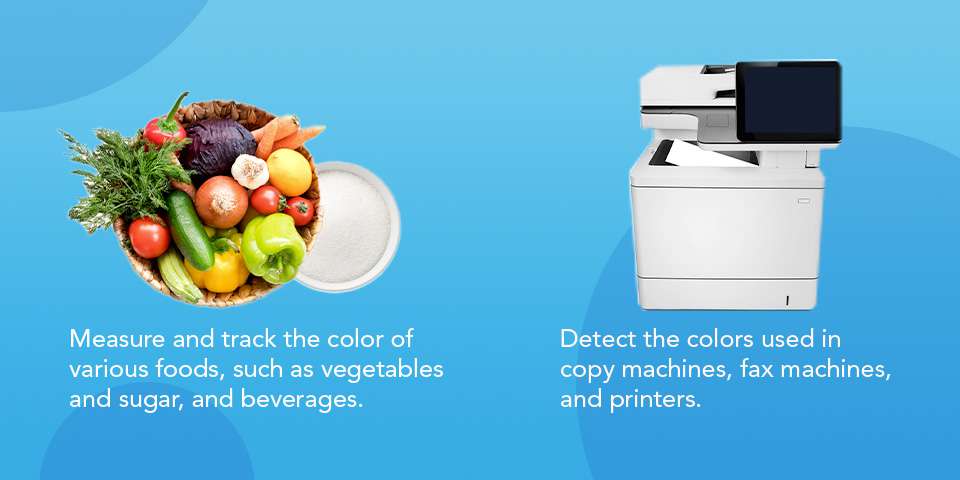
Colorimeters are straightforward color comparison tools that are often confused with spectrophotometers. However, colorimeters have a more limited range of capabilities than spectrophotometers. What exactly is a colorimeter, and how does it work?
What Is a Colorimeter?
A colorimeter is a device that measures and quantifies emitted light from a sample. It is used primarily to identify color differences between a production sample and a known color standard. The primary elements of a colorimeter include:
- Illuminant: A controlled light source used to illuminate the sample being measured.
- Tri-stimulus absorption filters: Red, green and blue (RGB) filters which quantify the emitted sample light in the form of tri-stimulus values, which replicate the human visual response to color.
- Display: Presents the data in the form of industry standard color scales and color differences.
Colorimeters may be tiny and portable for usage on the road or bigger for benchtop use in a lab.
How Does a Colorimeter Work?
The colorimeter illuminates the sample being measured using a controlled light source. The light not absorbed by the sample is ‘emitted’. This light is what we see as the color of the sample. This emitted light is compared to an established standard for pass/fail determination.
The colorimeter's lens and tristimulus absorption filter converts the light beam into an isolated wavelength. The photocell measures how much of the wavelength was absorbed and displays the data on its digital display. Colorimeters and spectrophotometers are among the most advanced color-measuring tools. Although closely linked, they each have distinct qualities that make them best suited to specific measurements.
A tristimulus colorimeter is an essential tool for objective color measurement. It consists of three fundamental components:
- Light source: The initial lighting is provided by a steady light source, usually a bulb with a consistent voltage.
- Filter system: The filter system consists of a collection of three filters. Each filter transmits a specific wavelength, allowing for selective study of the reflected light from the sample.
- Photoelectric detector: This detector transforms the intensity of emitted light into an electrical signal. The electrical output matches the sample's color attributes.
Ideally, the combined response of the light source, filters, and detector should closely resemble the spectrum sensitivity of the human eye to a certain illuminant. Getting a perfect match between the instrument response and human eyesight is difficult. However, high-quality tristimulus colorimeters provide an accurate approximation. Notably, the mismatch occurs often in the short-wavelength band. Mathematically modifying the measured blue value (Z) in proportion to the green value (Y) creates a more accurate total value.
Because the instrument's response might vary over time, it is critical to calibrate it regularly according to manufacturer’s recommendations. Modern colorimeters generate digital outputs that may be automatically translated into industry standard color values such as CIELAB (L*,a*,b*) or CIELCH (L*C*h*) systems.



